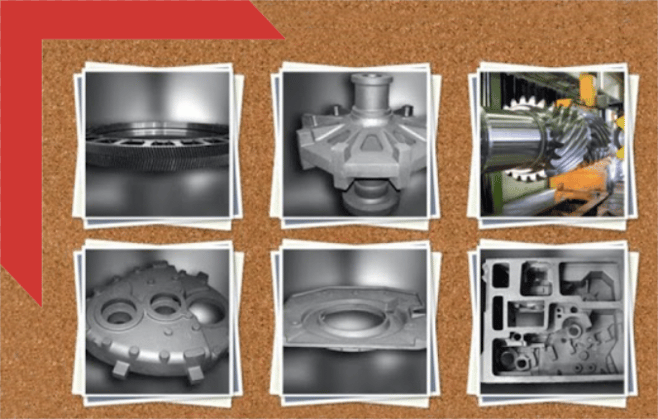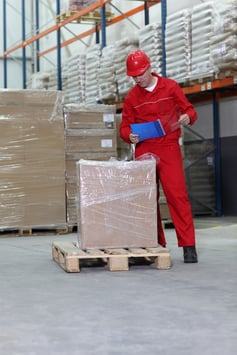
Transparency is a word that gets used a lot in the industrial world. Everyone wants greater transparency — transparency into their manufacturing process, transparency into their supply chain, transparency into every facet of the business.
While there are a wide range of software packages and analytical tools that offer transparency, there are few solutions that allow you to literally watch your business in action from anywhere on the planet. That is, until now.
 Photo documentation software gives you a unique ability to see your products and parts as they move through your supply chain. This isn’t figurative transparency. This is literal visibility of your pieces, packages, and crates.
Photo documentation software gives you a unique ability to see your products and parts as they move through your supply chain. This isn’t figurative transparency. This is literal visibility of your pieces, packages, and crates.
Here’s how it works: Photo documentation software is usually implemented by your industrial packaging partner. As they package your parts and materials, they apply scannable bar codes. At each step in the process — from packaging to shipment to unpacking on the receiving end — the parts and containers are scanned. That data is uploaded into a cloud-based file structure where you can access the information.
Scannable bar codes aren’t new. However, photo documentation software takes it a step further by including images of the actual products and parts as they are packaged. Those photos are also available with just a few clicks by accessing the online file structure for the project.
How does photo documentation software enhance the packaging and shipping components of your industrial project? Here are three of the biggest benefits:
Photo documentation ensures quality of products and process.
The most powerful benefit of photo documentation software may also be the most obvious. It gives you real visibility into your process. With only a few clicks you can access the file structure and see photos of your parts, products, and containers.
This helps you do a few things. One is that you can ensure quality by seeing the part’s condition throughout the shipping and packaging process. However, you can also ensure that the right parts are being placed in the right packages. The file structure is organized by package, so you can see which parts are being bundled together. If there’s an issue, you can get it corrected before the package is sealed and shipped.
It provides instruction to the crew on the receiving end, which eliminates delays and inefficiencies.
It happens on nearly every large-scale industrial project. There are hundreds, perhaps thousands, of parts being shipped on a regular basis. The crew on the jobsite has to receive these packages, sort the parts, and then get the parts to the correct final destination.
With that much activity happening, it’s inevitable that something will get lost or that it will end up at the wrong area of the worksite. It’s also possible that the crew simply may not know what part they’re looking for. If they’re not familiar with the parts, it can be hard to sort through the packages correctly.
 With photo documentation software, the crew on the receiving end can access the cloud for guidance. They can see what is in each package so they know exactly where to look for a part. If they’re not familiar with what a part looks like, they can simply reference the picture on the cloud.
With photo documentation software, the crew on the receiving end can access the cloud for guidance. They can see what is in each package so they know exactly where to look for a part. If they’re not familiar with what a part looks like, they can simply reference the picture on the cloud.
Photo documentation software accelerates and optimizes the unpack process, reducing delay and saving you money.
It helps you protect yourself against in-transit damage.
There’s nothing worse than shipping out a part in good condition only for it to arrive at its destination with damage. Unfortunately, these things happen. The real question is then how to resolve the issue and who should be held liable.
 Photo documentation software helps you pinpoint exactly where a part may have been damaged. You’ll have photographs of the parts before they head out for transport. You can use those photos to verify that the part was in good condition when it left the facility. If it was damaged on arrival, you can be sure that the damage happened in transit.
Photo documentation software helps you pinpoint exactly where a part may have been damaged. You’ll have photographs of the parts before they head out for transport. You can use those photos to verify that the part was in good condition when it left the facility. If it was damaged on arrival, you can be sure that the damage happened in transit.
That kind of visual documentation can be helpful if you’re pursuing a claim against the shipper. They may push back and argue that the part was already damaged. However, it’s hard to argue that point when photographic evidence suggests otherwise.
You have too much invested into your industrial project to risk damage, delays, or other quality defects. Photo documentation helps you monitor and optimize your packaging and shipping processes. Gain true, actual transparency and visibility into your process. Learn how you can leverage the power of photo documentation.






Let Us Know What You Thought about this Post.
Put your Comment Below.